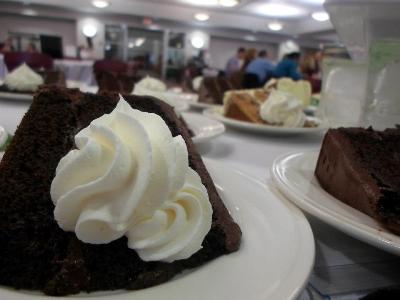Content Marketing and University Programming
Throughout my teenage years and my early twenties, I hated the phrase “kids these days.” In my naïve mind, I wasn’t a kid, I knew pretty much everything there was to know and I was certain that I was, by leaps and bounds, wiser than my parents. These days, I like to think that I’ve gotten a little smarter and at least accepted the fact that my mom is almost always right…about everything.
Content Marketing 101: Know Your Audience
Okay, I know what you’re thinking. How does this relate to content marketing and university programs? Great content marketing comes from knowing your audience. Universities are taking note of content marketing techniques and revising traditional methods of advertising in order to reach “kids these days” and how they search for information. Now, that’s not to say old-school methods aren’t effective. According to a recent blog post in The Guardian, social media isn’t the best strategy for universities trying to recruit students who are not already considering that school as an option. For students who are already involved, though, social media is quite useful in getting a message across about school programs. Makes sense, right? If I were lucky enough to be back in college (oh to be so carefree again…sigh), I have no doubt that I would have already “liked” my university’s Facebook page, I would be following the school on Twitter, and I would be watching videos about on-campus activities and opportunities.
Two Schools Are Leading the Way
Missouri State University revamped their on-campus dining program and needed a low-cost, effective wa y of communicating to students about the new options and features. Enter social media. During the summer of 2011, Missouri State, along with their dining partner Chartwell, launched an aggressive media campaign that began with Facebook and Flickr advertising, and then moved to YouTube and Twitter. Each post linked back to the dining program website, making information easily accessible for customers, parents and especially students wanting to know more. Guess what happened? According to a Missouri State case study, “Voluntary meal plan sales during the fall 2011 semester increased $800,000 due to social media marketing efforts.” Chartwell placed useful and well-tailored information on social media outlets, and in turn, readers trusted the information and increased the chances of a dining plan purchase.
y of communicating to students about the new options and features. Enter social media. During the summer of 2011, Missouri State, along with their dining partner Chartwell, launched an aggressive media campaign that began with Facebook and Flickr advertising, and then moved to YouTube and Twitter. Each post linked back to the dining program website, making information easily accessible for customers, parents and especially students wanting to know more. Guess what happened? According to a Missouri State case study, “Voluntary meal plan sales during the fall 2011 semester increased $800,000 due to social media marketing efforts.” Chartwell placed useful and well-tailored information on social media outlets, and in turn, readers trusted the information and increased the chances of a dining plan purchase.
Another great example of content marketing for students who are already involved in a school is the recently launched On Campus mobile app by North Carolina State University. Joe Pulizzi’s 100 Content Marketing Examples highlights the app, which offers location-based content for students, depending on where they are on campus. Pulizzi notes that “it includes check-ins, event promotions, digital rewards and points, maps of nearby locations, reviews and photo sharing. Since there’s so much happening on campus at any given time, On Campus features content about events very prominently, so students and faculty can see what’s happening anytime anywhere.”
 You can check out the program by visiting NC State’s website, and do anything from finding the nearest bus stop to watching videos. NC State is really on to something here – they have created an application that places useful, everyday information at the fingertips of all of their students. How much of this was available but otherwise unnoticed before the app? It’s difficult to say, but I’m willing to bet the numbers are staggering.
You can check out the program by visiting NC State’s website, and do anything from finding the nearest bus stop to watching videos. NC State is really on to something here – they have created an application that places useful, everyday information at the fingertips of all of their students. How much of this was available but otherwise unnoticed before the app? It’s difficult to say, but I’m willing to bet the numbers are staggering.
To sum it up, the “kids these days” at universities across the nation are accustomed to having easy access to the information they want to know. Whether it be a quick Facebook post reminding them to sign up for their meal plan or a mobile app to help a freshman who is afraid to ask anyone how to get to a specific classroom, easy information, specifically through social media, is key. The “there’s an app for that” slogan sums up the future of social media, especially with the next generation. It’s encouraging to see universities taking notice of this phenomenon and catering to their biggest clientele.
Learn more about EVG’s content marketing services for higher education.
Caralee Culpepper – Message Board Specialist



